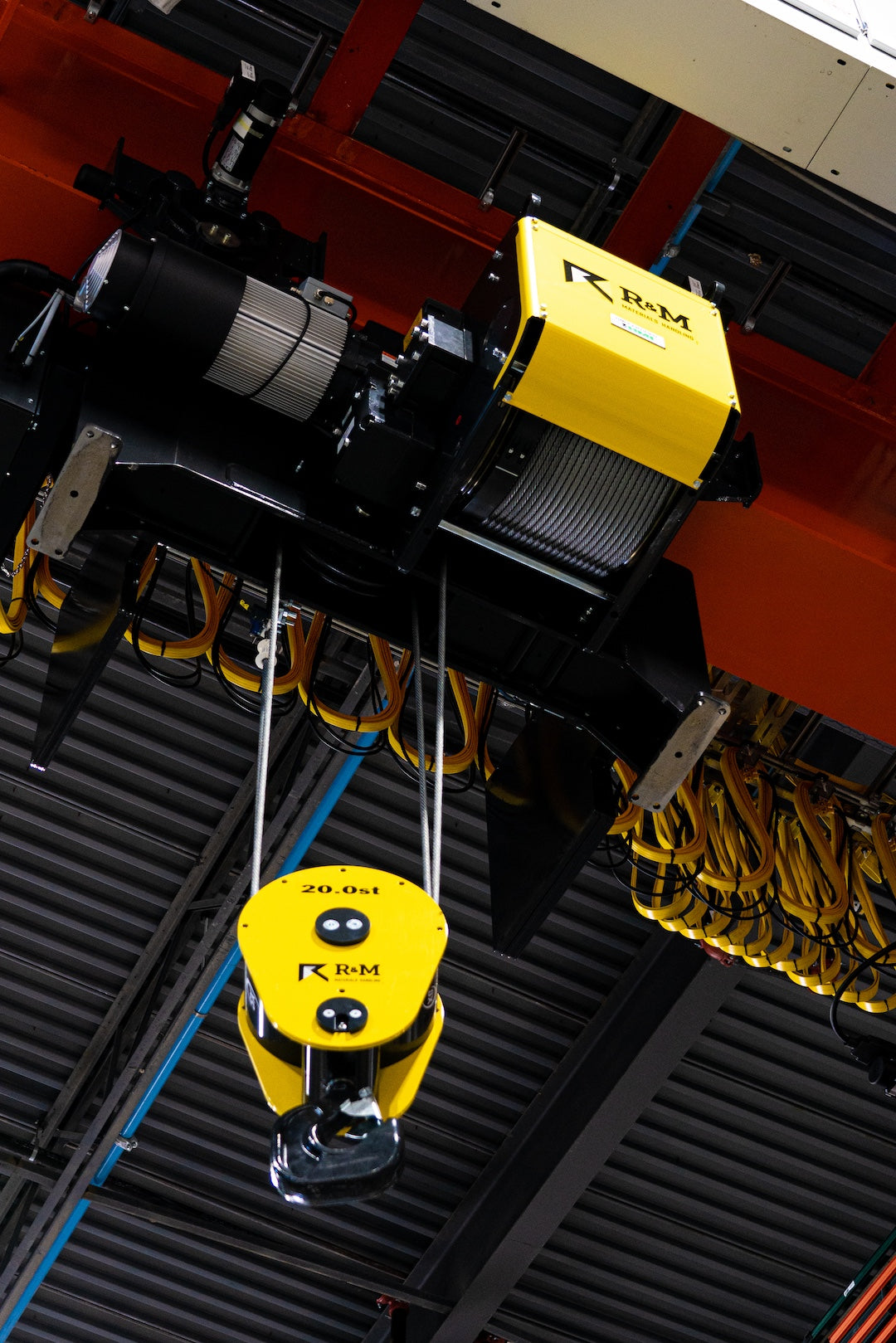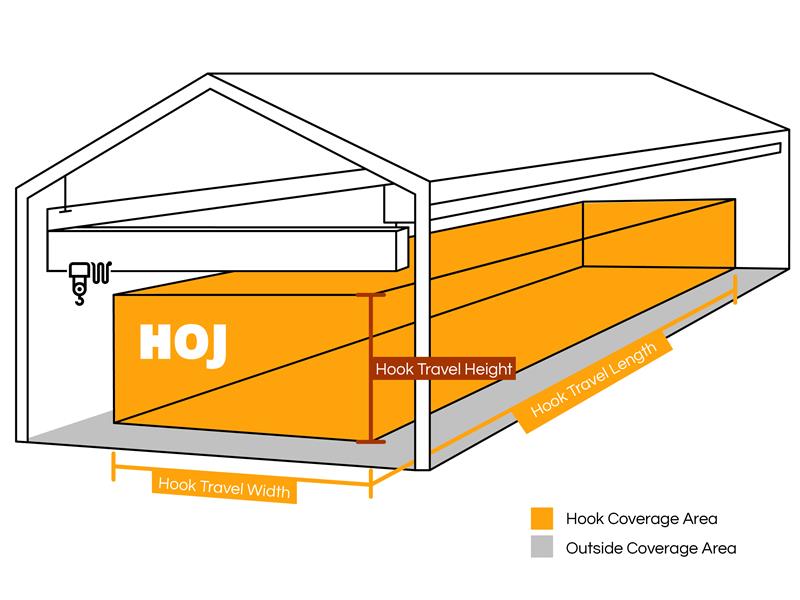Your Cart is Empty

The Future Of Automated Robots - The Warehouse Floor Ep. 4
Recently, Hoj Innovations has taken a significant leap, building automation and controls expertise directly into their business—a move aimed at leveraging the latest technologies to benefit customers and stand out in a competitive market.
Mahli Guerrero, newly appointed as Hoj's Director of Automation, is leading this charge. "The world of automation is crazy busy, and that's what everybody's looking for," she shares, highlighting this industry's rapid expansion in recent years.
Having recently onboarded a fourth engineer, Hoj Innovations is positioning itself at the cutting edge of warehouse automation.
For Tim Hoj, CEO, this new direction builds on decades of foundational work with automation partners. But now, by cultivating an in-house team with advanced controls expertise, Hoj Innovations aims to make these capabilities a core part of its business.
Tim emphasizes that the timing couldn't be better, given the rapid advances in automation technology available today. This pivot towards automation, he notes, will be "instrumental for differentiation and for Hoj Innovations future growth."
Table of Contents
- Bridging New Ideas with Industry Experience: Mahli Guerrero's Path to Automation Leadership
- The Power of the Beckhoff System: Cost-Effective, Secure, and Built for the Future of Automation Technology
- Exploring the Potential of Robotic Arms and AMRs in Modern Warehousing
- Myth-Busting: Are Robots Really Here to Take Jobs?
- Demo Robots: Building Confidence Through Real-World Testing
- Investing in Automation for Lasting ROI and Business Growth
- Cloud-Based Interfacing: Meeting New Demand
- Embracing the Future of Warehouse Automation
Bridging New Ideas with Industry Experience: Mahli Guerrero's Path to Automation Leadership
Mahli Guerrero's path to automation leadership wasn't typical. Fresh out of college, she entered the world of controls through one of Hoj's integration partners, bringing a fresh, academic perspective to an industry often grounded in tradition.
"being able to see the traditional controls world coming out of school and then taking what I learned in school and being able to apply those principles now, has been lots of fun.," Mahli shares.
By introducing new ideas from her studies, she's found ways to make traditional systems more flexible and efficient, adapting them to meet modern needs. This fresh approach has proven to be an advantage for all of Hoj's clients seeking adaptable, forward-thinking solutions.
With Mahli leading the automation team, Hoj can offer a balance of reliable controls paired with new, innovative, and cost-effective technology.
The Power of the Beckhoff System: Cost-Effective, Secure, and Built for the Future of Automation Technology
The rising cost of controls—software, programming, and system configuration—has become a significant issue in automation.
For many, it's an unexpected expense that matches or even exceeds the cost of physical conveyor hardware. This trend, noted by Tim Hoj and his team, has become a major barrier to automation adoption for many of their past clients.
Customers who initially budget for conveyors often experience sticker shock when control costs come into play. "We thought about the conveyor system and then realized the controls to make it [work] were just as much as the hardware," Tim explains.

Over time, this has led to customer pushback, highlighting the need for a cost-effective alternative.
After exploring options, Hoj Innovations turned to Beckhoff's platform as a potential cost-reduction solution. "We felt like Beckhoff was the solution that would allow us to be more scalable and present a better price point to our customers," says Tim.
Unlike traditional PLC systems that require custom setups from the ground up, Beckhoff uses a PC-based approach. This shift offers cost-saving advantages, allowing for reusable programming libraries that cut down on time and expenses.
By simplifying how controls are integrated, Beckhoff has enabled Hoj to keep costs manageable while meeting performance demands.
Today, this PC-based platform helps Hoj deliver reliable automation without the high price tag. Customers get the flexibility they need to grow and adapt systems over time—without being constrained by rigid, costly control setups.
For companies that prioritize quality & cost effective automation, this innovative solution has proven to be a game-changer Hoj and their clients.
Programming-Based Flexibility with Beckhoff
Unlike traditional controls, Beckhoff shifts from a rigid, machine-focused approach to a programming-centered platform.
"One of the benefits of Beckhoff is…it incorporates a lot of the programming world rather than the controls world," Mahli Guerrero explains.
Being based in programming rather than controls based allows for pieces of code to be reused over and overagain as needed. In essence they are building libraries of code that they can pull from and reuse. If they had continued to use the controls base they wouldn't have this capability and each and every job would be 100% customizable and extremely expensive to build out - like it was previously.
Mahli adds that in material handling, basic needs—like moving products from point A to point B—remain constant. Beckhoff's system builds on this by allowing customization for specific applications while maintaining a reliable base layer which is stored in their coding library.
The familiarity with Microsoft tools also means teams can integrate Beckhoff into existing setups easily, bridging the controls world with automation technology, IoT and cloud technology.
Remote Support and Maintenance

While cost savings is a significant benefit with the Beckhoff model, it also provides the ability for remote support from Hoj Innovations engineers whihc is invaluable for HOJ's growing team and their clients.
With traditional PLCs, on-site troubleshooting was often unavoidable, leading to costly delays. Mahli notes, "Now, with internet accessibility, we're on the phone with them…we can quickly see, in the code and, what's going on." Beckhoff enables remote problem-solving, allowing experts to diagnose and guide on-site staff in real-time.
This capability saves both time and money by eliminating travel and minimizing downtime. It also ensures a smoother, faster response for companies anywhere in the world, which is essential for operations that can't afford prolonged interruptions.
Enhanced Security and Access Control
Security is increasingly critical in today's interconnected landscape.
The Beckhoff method by nature is a P.C. based system. This ultimatly means that the security for this system lies in the base operating systems layer. The advantage to this is the vast majority of I.T. companies are familiar with commonly used Operating systems and can easily deploy their security measures to protect user data.
For PLCs you would need to integrate protections directly at the server level. and if those protections are bypassed it would become a serious vulnerability.
Exploring the Potential of Robotic Arms and AMRs in Modern Warehousing

Robotic arms and AMRs are redefining automation in warehousing, making tasks faster, safer, and more adaptable. These technologies are transforming operations and opening new opportunities for businesses of all sizes.
Revolutionizing Warehouse Tasks with Robotic Arms and AMRs
Automation is transforming warehousing through robotic arms and autonomous mobile robots (AMRs).
These technologies are offering practical solutions for supporting workers on the floor who have to do repetitive and physically demanding tasks.
For example, the process of palletization is physically demanding work, placing strain on the back, neck, etc… When it comes to such tasks, "robots are doing a great job." Tim explains. By handling weighty or time-consuming jobs, these robots not only improve worker safety and health but also enhance efficiency across operations.
In recent years, the market has evolved rapidly. Mahli, when referring to automation shows that she has personally attended in the past said that 4-5 years ago "there wasn't a lot to ge excited about. And now, in just the last year or 2 it seems like an entirely different show because of the new technology that has come out.
Technologies once limited to large companies are now accessible to smaller and mid-sized businesses, thanks to more affordable pricing and increased versatility. This broad accessibility is a game-changer, enabling companies of all sizes to leverage robotics for tailored solutions.
AMRs vs. AGVs: The New Standard in Flexibility

For decades, Automated Guided Vehicles (AGVs) were the standard in warehouse automation, but their limitations are now driving a shift toward AMRs.
Unlike AGVs, which require fixed pathways, AMRs offer flexibility, adaptability, and cost-efficiency. Here's how AMRs are changing the game:
- Flexible Navigation: AMRs don't rely on fixed pathways like AGVs, which often need grooves, magnetic tape, or preset routes. Instead, AMRs use advanced sensors and A.I. to navigate dynamically.
- Faster Deployment: AMRs are five times easier to implement, which allows companies to set up complex routes quickly without extensive engineering.
- Lower Cost of Installation: Since AMRs don't need fixed infrastructure, they reduce installation and setup costs, making them accessible to smaller and mid-sized businesses.
- Adaptability to Changing Environments: AMRs can adjust routes on the fly, accommodating changing warehouse layouts and evolving needs without costly re-engineering.
AMRs, over AGVs, are an appealing choice for companies looking to enhance efficiency and scalability in their operations.
Fast and Accessible Implementation
The ease of deploying AMRs is especially beneficial for smaller teams without extensive engineering resources.
Mahli recalls a recent demo with a client: "We went out the day before…set up where we were going to do the demo and showed it off the next day." The speed and simplicity of this setup left the client impressed with the range of applications possible with AMRs.
This quick turnaround and flexibility are transforming client expectations.
In a single day, companies can witness robots scanning, adapting, and executing complex routes across long paths at their own facilities —demonstrating the tangible value AMRs bring to their operations.
Tim highlights this impact, noting that these advancements are "unbelievably exciting" as they allow businesses to envision new possibilities for automation on a practical, scalable level.
Myth-Busting: Are Robots Really Here to Take Jobs?
Robots are often feared as job-takers, but rather than replacing workers, robots in warehousing handle repetitive, time-consuming tasks, freeing employees for more meaningful work.
Key Points on Robots and Job Security:
- Augmenting Tasks, Not Replacing Roles: Robots take on time-consuming, non-value tasks, like transporting items across a warehouse, allowing employees to focus on more skilled work.
- Shifting Focus to Value-Added Roles:
o Workers focus on complex or higher-value tasks, while robots handle routine movements.
o According to Mahli, employees actually appreciate these robots. They often say, "I can stay and continue to feel productive and efficient while this thing is doing what I don't want to do."
- The Future of Robots: Advanced robotic functions may one day be feasible, but Tim points out this future remains both far off and unaffordable for most businesses. For now, humans are essential for decision-making and quality checks.
FAQ: How Do Robots Impact Jobs in Warehousing?
Q: Are robots replacing warehouse jobs?
A: No, robots are meant to handle repetitive, low-value tasks so employees can focus on more skilled and satisfying work.
Q: What types of tasks do warehouse robots handle?
A: Robots manage time-consuming tasks like moving items across large distances, which frees up employees for roles that require complex problem-solving and decision-making.
Q: Will robots ever fully replace warehouse workers?
A: According to Tim, it's unlikely any time soon. Advanced robotic capabilities are still far off and currently unaffordable for widespread use. People remain indispensable for decision-making, quality control, and adapting to daily changes.
Demo Robots: Building Confidence Through Real-World Testing

Hoj Innovations' demo center in Salt Lake City provides clients with hands-on experience, allowing them to see how robots handle specific tasks.
Recently, the team worked with a manufacturing client who needed to move an unusually shaped cart. Instead of relying on theoretical promises, the client observed the robot in action—and the results exceeded expectations for both stability and precision.
As Tim recalls, "It came off even much better…this is really what we needed to approve the project and to move forward."
For Mahli, this hands-on approach reflects Hoj Innovations' dedication to reliable, practical solutions. "That's actually one of the reasons I really love working here…[Hoj is] willing to make those investments," she says.
The demo center allows Hoj's team to conduct R&D, giving clients confidence in their automation solutions before making a major investment.
With demo robots ready for testing, Hoj Innovations can reassure clients that their systems will deliver as promised.
Investing in Automation for Lasting ROI and Business Growth
Tim Hoj shares how his father's focus on operational efficiencies laid the foundation for Hoj Innovations' approach to automation today.
The idea is simple: every automation solution delivers an immediate return on investment (ROI), but the benefits don't stop there. Once in place, these efficiencies continue paying back day after day, driving profitability and reducing overhead.
Tim explains, "Once the investment's there, it continues to contribute to the profitability of the business." This approach enables clients to streamline operations, boost profits, and reinvest in their growth, from supporting staff wages to expanding facilities.
Hoj Innovations is bringing this philosophy into a new technology center project. The upcoming R&D facility will focus on controls, robotics, and cloud-integrated solutions, creating a space where Hoj can test and showcase cutting-edge tools.
"It's exciting now to link that to machine control and AMRs…offering this connected experience," Tim notes. For Hoj, investing in technology that supports ongoing client success isn't just about the immediate ROI—it's about enabling sustainable growth.
Cloud-Based Interfacing: Meeting New Demand
In just the past year, demand for cloud-based interfacing has surged. Mahli notes, "All of our customers now are asking, can you do cloud-based interfaces?"
Hoj Innovations is ready, confidently answering, "Yes." This shift enables clients to manage operations with greater flexibility, connectivity, and efficiency—aligning with the industry's evolving needs.
Embracing the Future of Warehouse Automation
Warehouse automation is evolving rapidly, and Hoj Innovations is leading the way. The company's approach to making automation accessible—from cost-effective systems like Beckhoff to advanced AMRs and robotic arms that streamline operations and boost safety.
Mahli highlighted that automation supports workers by handling repetitive tasks, allowing employees to focus on more valuable work. Hoj Innovations is also meeting the demand for cloud-based interfaces, providing clients with greater flexibility and efficiency.








